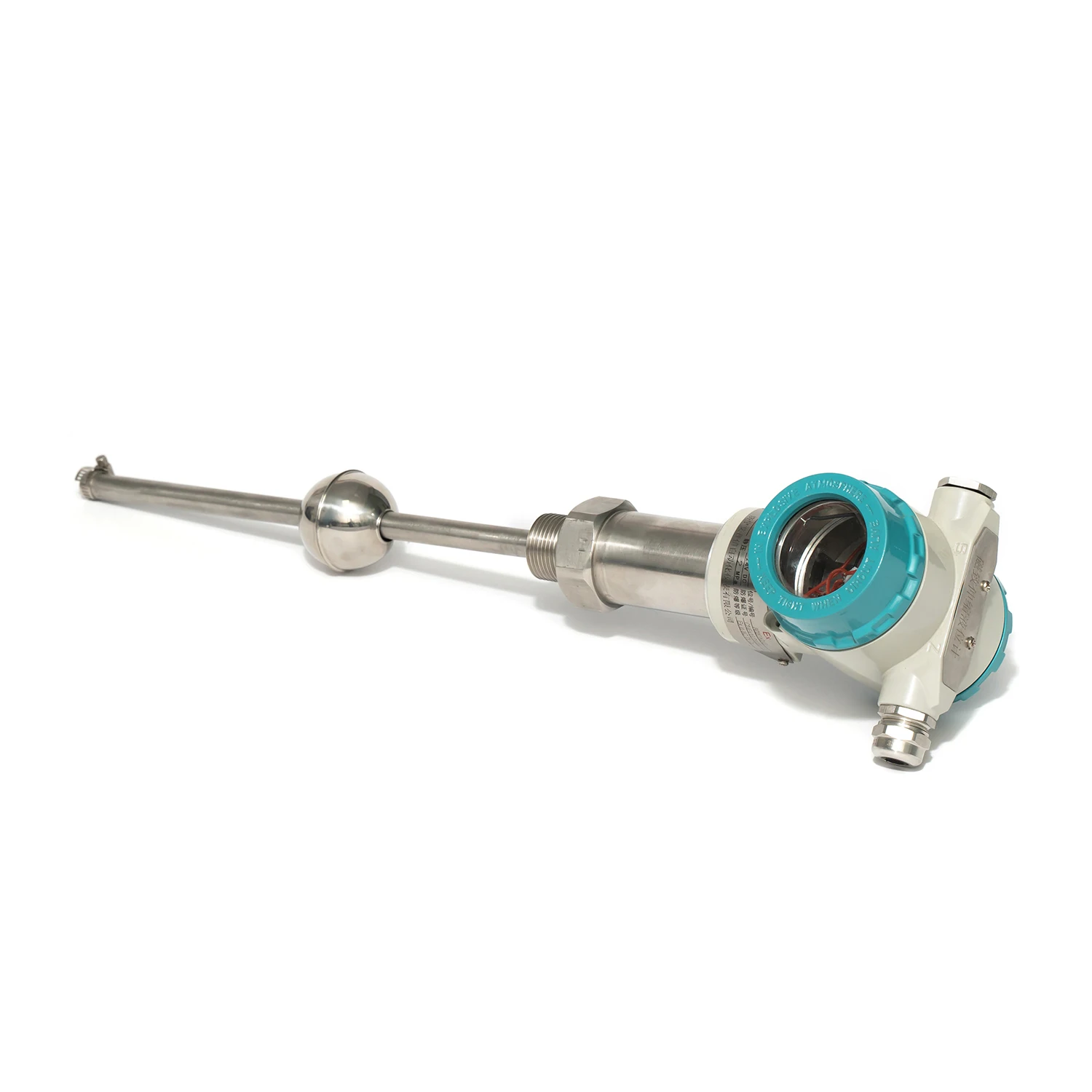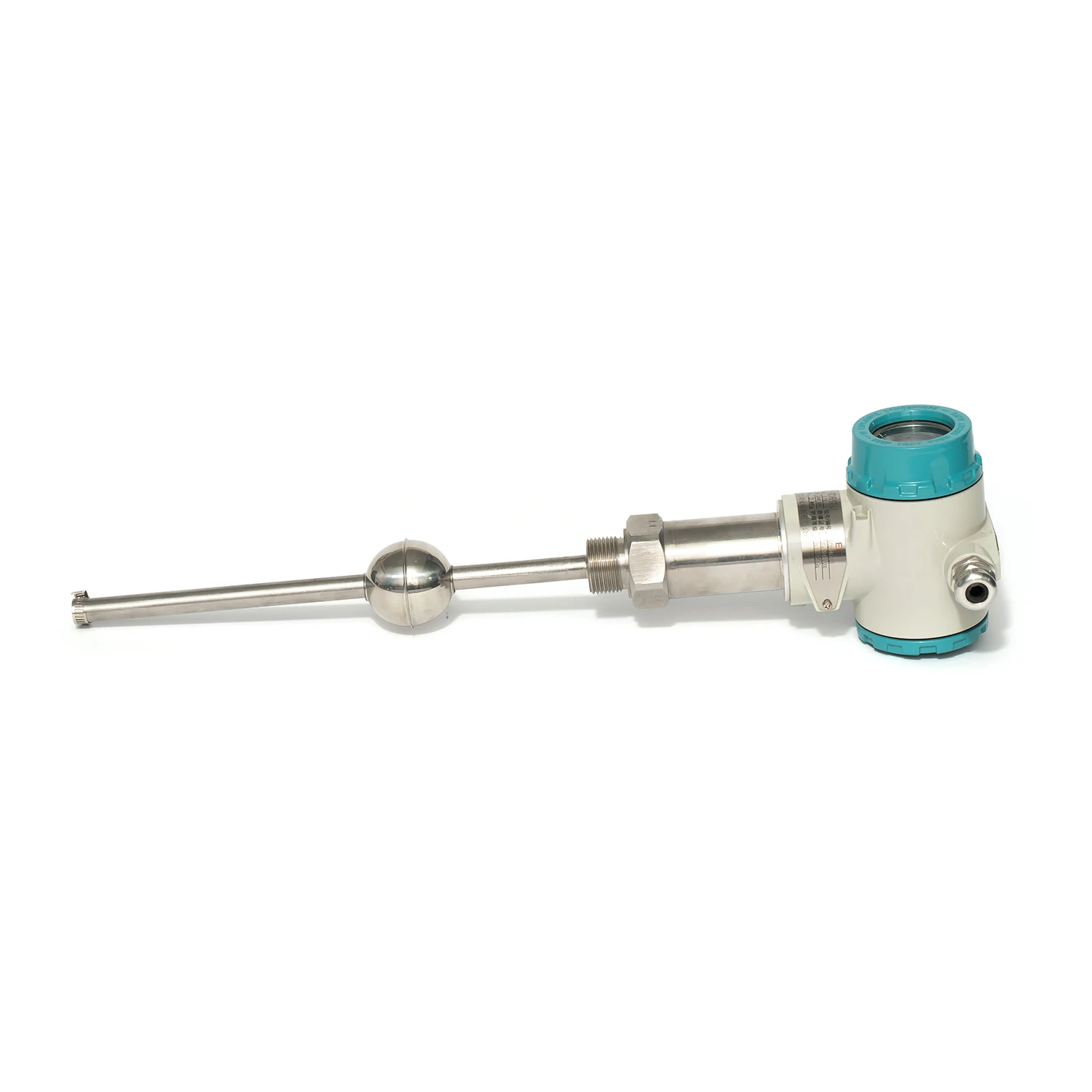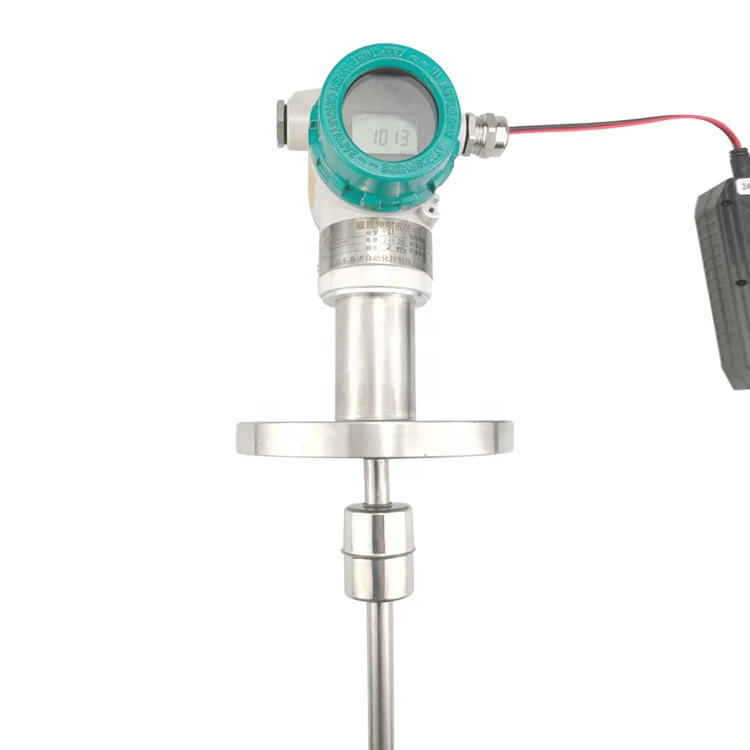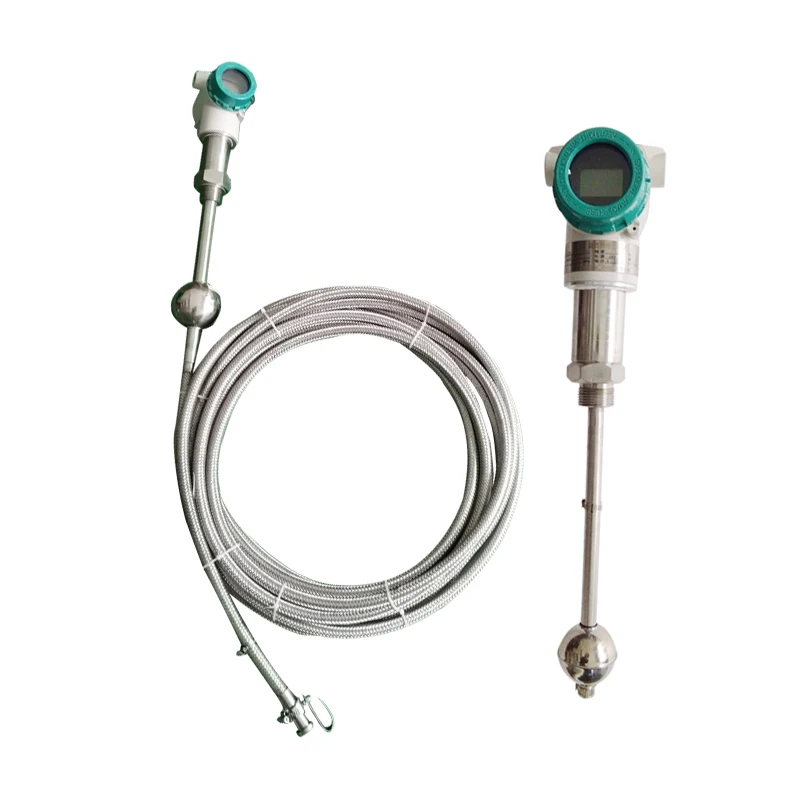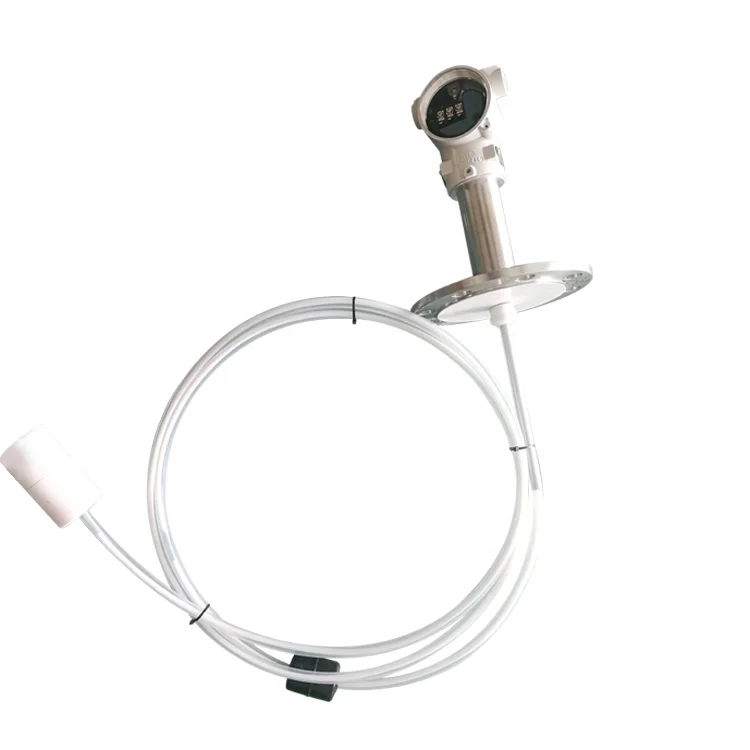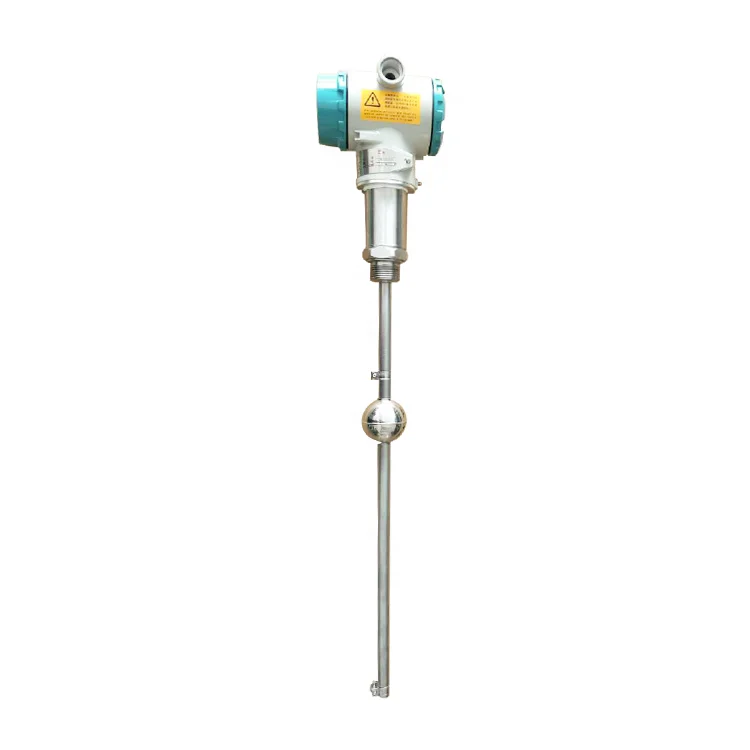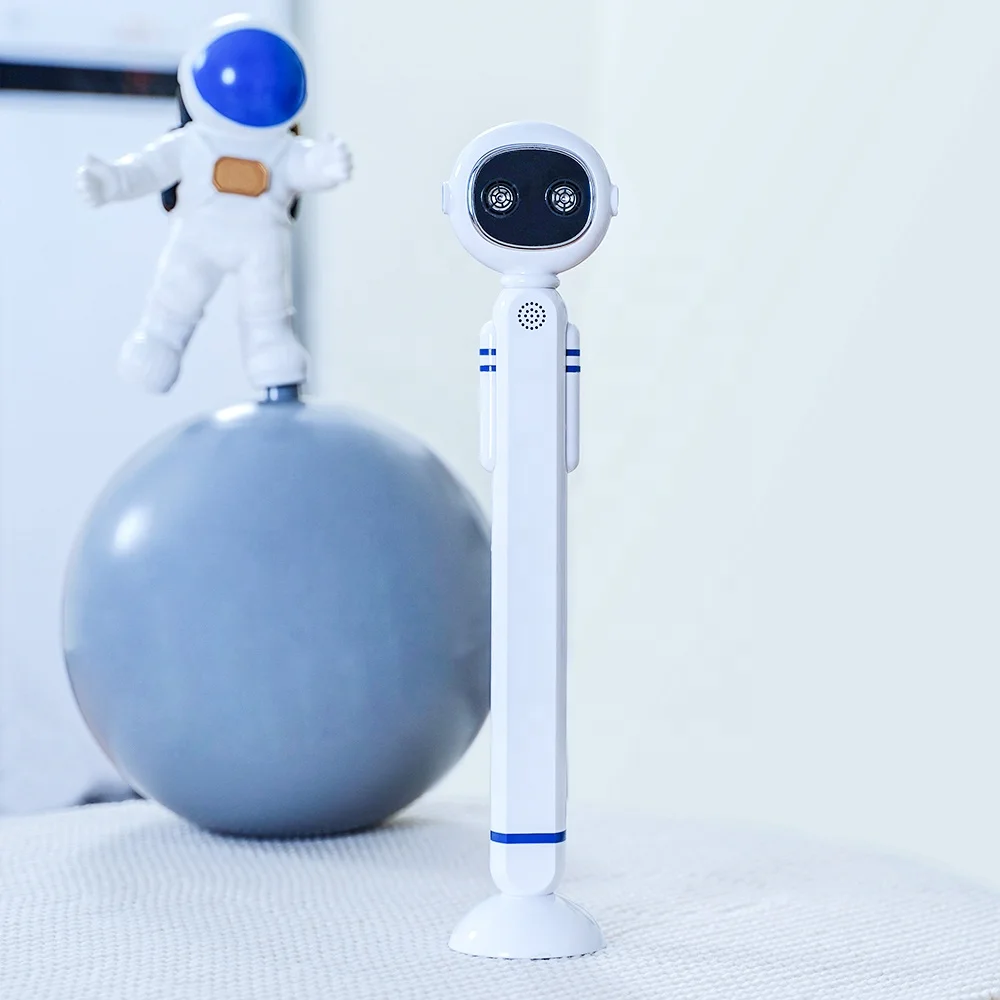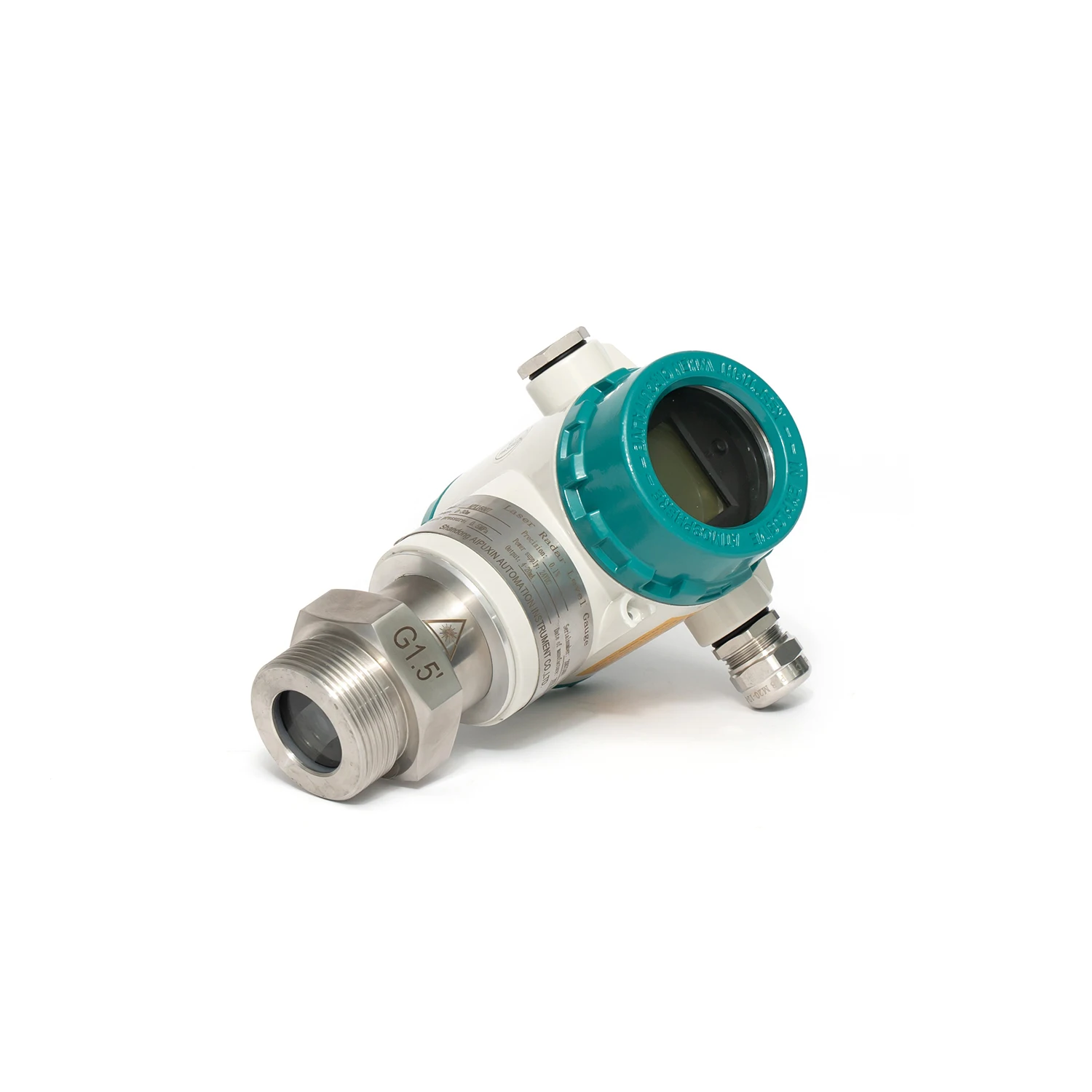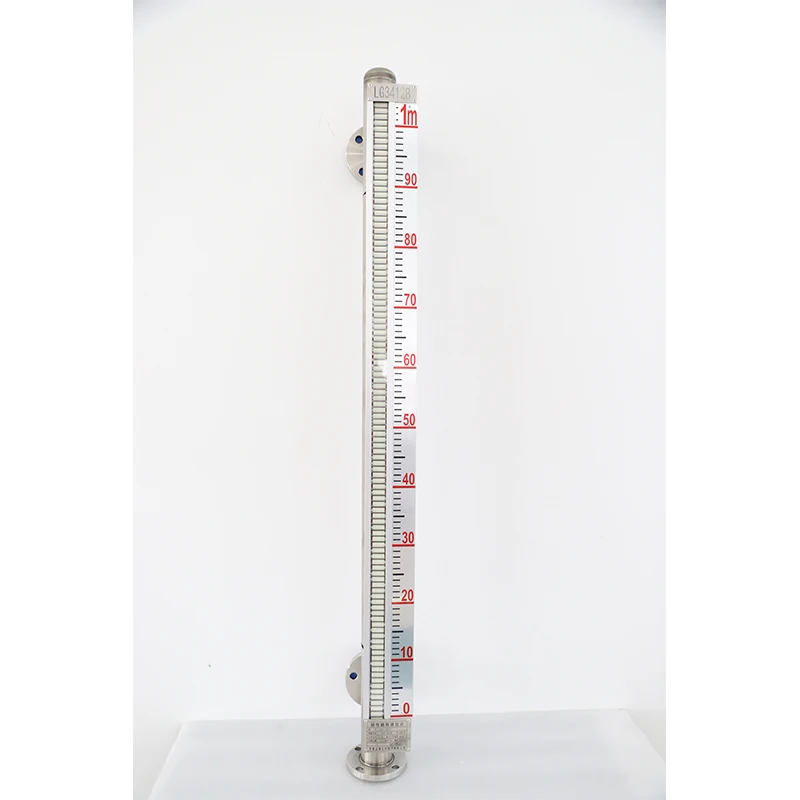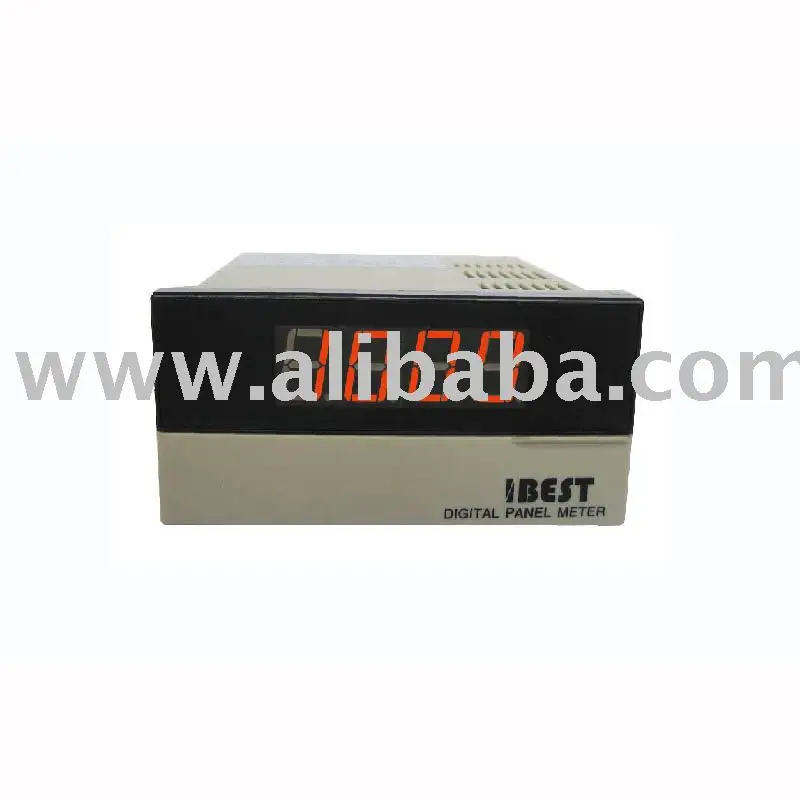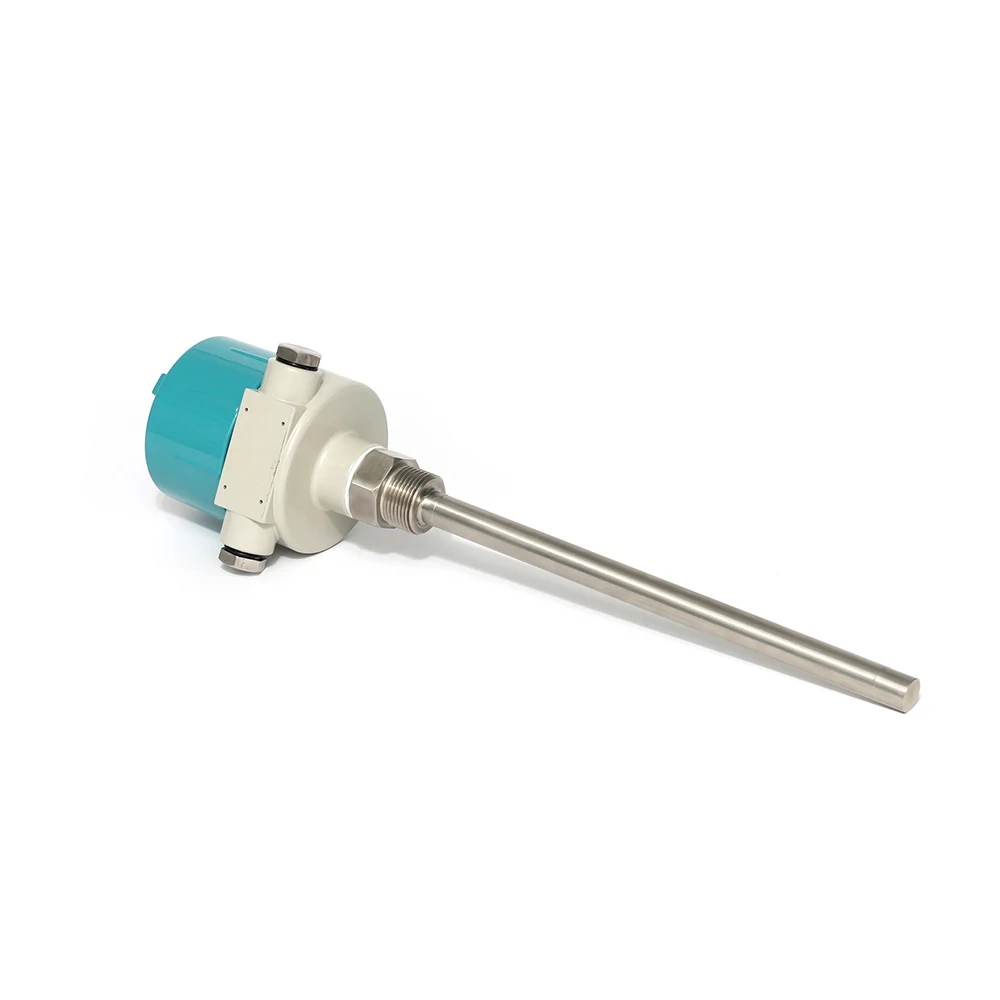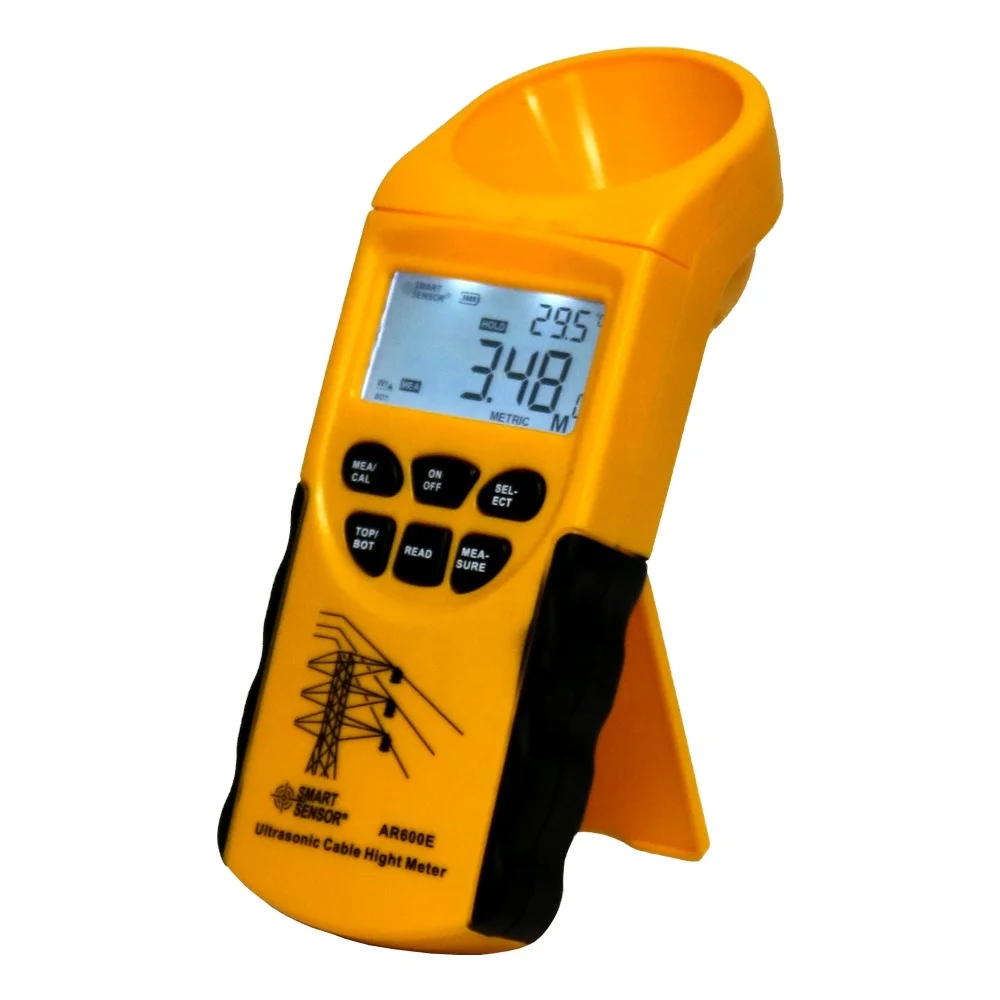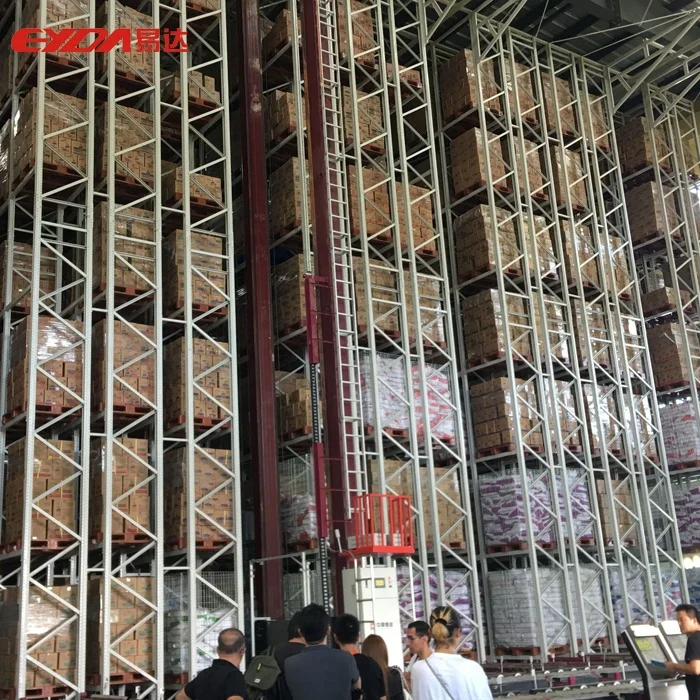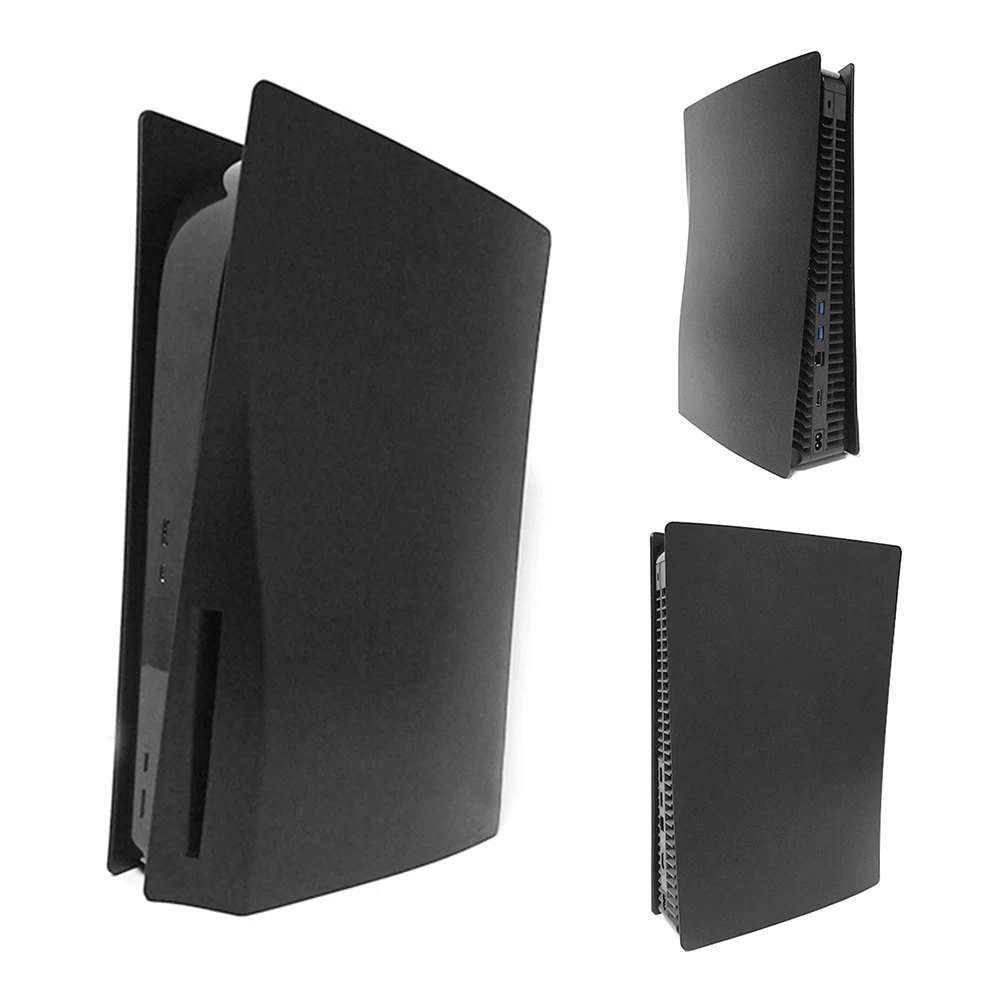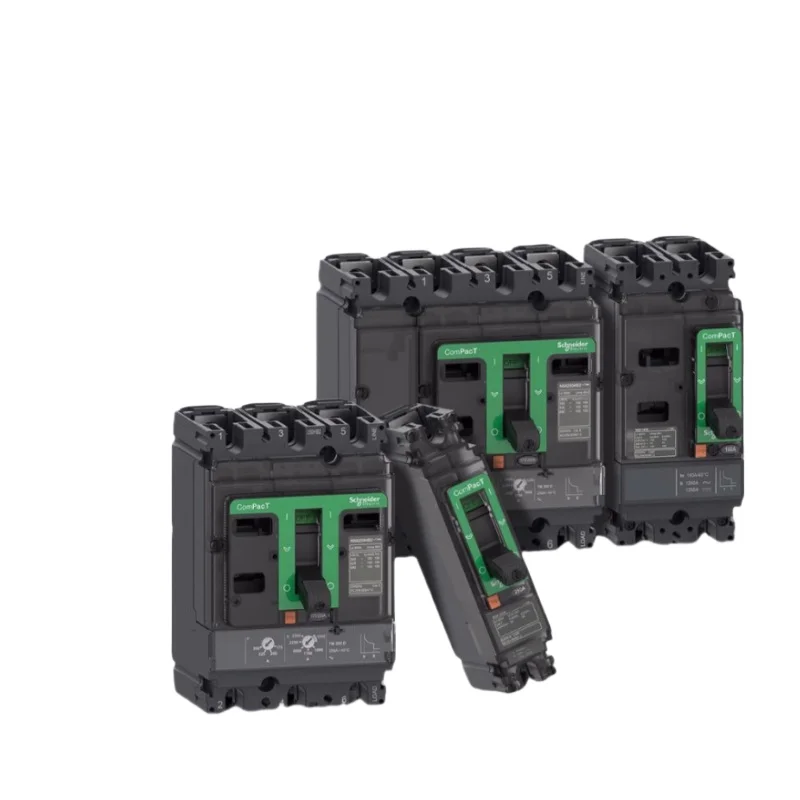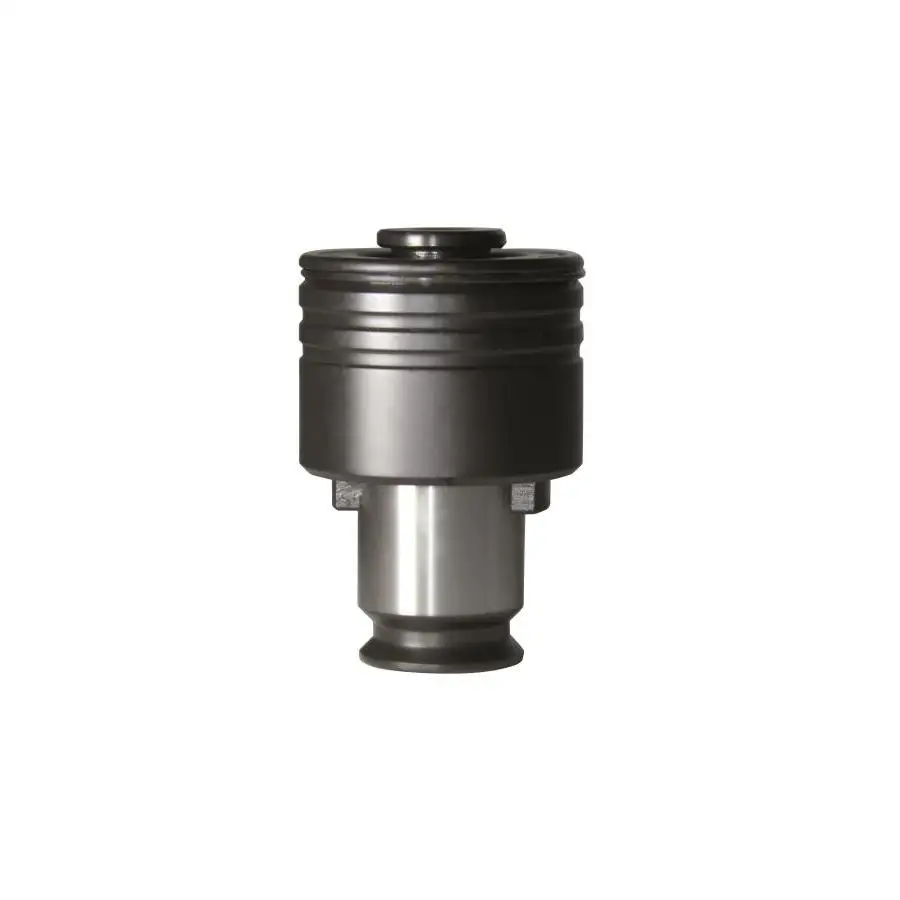Магнитострикционный Датчик уровня типа стержня/передатчик плавающего шарового с разъемом 4 20 мА
- Категория: Height Measuring Instruments >>>
- Поставщик: Shandong Aipuxin Automation Instrument Co. Ltd.
Сохранить в закладки 1600276435318:
Описание и отзывы
Характеристики
Magnetostrictive Level Gauge Rod Type/Floating Ball Level Transmitter Plug-in 4-20mA
 The structure of the magnetostrictive liquid level sensor is composed of a stainless steel tube (measurement rod), a magnetostrictive wire (waveguide wire), a movable float (with a permanent magnet inside) and other parts, as shown in the figure. When the sensor is working, the circuit part will excite a pulse current on the waveguide wire, and when the current propagates along the waveguide wire, a pulsed electromagnetic field will be generated around the waveguide wire. There is a float outside the sensor rod, which can move up and down along the rod with the change of liquid level. There is a set of permanent magnetic rings inside the float. When the pulse current magnetic field meets the magnetic ring magnetic field generated by the float, the magnetic field around the float changes so that the waveguide wire made of magnetostrictive material generates a torsional wave pulse at the position of the float. This pulse moves along at a fixed speed. The waveguide wire is passed back and detected by the inspection agency. By measuring the time difference between the pulse current and the torsional wave, the position of the float, that is, the position of the liquid surface, can be accurately determined.
The structure of the magnetostrictive liquid level sensor is composed of a stainless steel tube (measurement rod), a magnetostrictive wire (waveguide wire), a movable float (with a permanent magnet inside) and other parts, as shown in the figure. When the sensor is working, the circuit part will excite a pulse current on the waveguide wire, and when the current propagates along the waveguide wire, a pulsed electromagnetic field will be generated around the waveguide wire. There is a float outside the sensor rod, which can move up and down along the rod with the change of liquid level. There is a set of permanent magnetic rings inside the float. When the pulse current magnetic field meets the magnetic ring magnetic field generated by the float, the magnetic field around the float changes so that the waveguide wire made of magnetostrictive material generates a torsional wave pulse at the position of the float. This pulse moves along at a fixed speed. The waveguide wire is passed back and detected by the inspection agency. By measuring the time difference between the pulse current and the torsional wave, the position of the float, that is, the position of the liquid surface, can be accurately determined.
Measuring range: | hard rod: 150mm~7000mm, soft rod: the longest 16000mm; |
Output form: | 4~20mA; 0~5V; 0~10V; ±5V; ±10V; RS-485 |
Linearity error: | better than ±0.05%FS; for sensors with a measuring range less than 300mm, the error is less than 150μm |
Repeatability: | better than ±0.002%FS |
Output temperature drift: | 50ppm/℃; |
Product power consumption: | ≤50mA; |
Output ripple: | ≤20mV; |
Load capacity: | 4~20mA output: load capacity ≤500Ω; |
Semi-finished circuit board



1. Strong reliability: Since the magnetostrictive level gauge adopts the waveguide principle, there is no mechanical movable part, so there is no friction and no wear. The entire transducer is enclosed in a stainless steel tube and is non-contact with the measuring medium. The sensor works reliably and has a long life.
2. High accuracy: Because the magnetostrictive level gauge works with waveguide pulses, the measured displacement is determined by measuring the time of the initial pulse and the end of the pulse during work, so the measurement accuracy is high, and the resolution is better than 0.01% FS. It is an accuracy that is difficult to achieve with other sensors.
3. Good safety: The magnetostrictive level gauge has high explosion-proof performance, intrinsically safe explosion-proof, safe to use, and is especially suitable for the measurement of chemical raw materials and flammable liquids. There is no need to open the tank lid during measurement, to avoid the insecurity of manual measurement.
4. Magnetostrictive level gauge is easy to install and simple to maintain: Magnetostrictive level gauges are generally installed through the existing nozzles on the top of the tank, and are especially suitable for the installation of underground storage tanks and tanks that have already been put into operation. The process does not affect normal production.
5. Facilitate system automation: the secondary instrument of the magnetostrictive level gauge adopts standard output signals, which is convenient for the microcomputer to process the signals, and it is easy to realize networking work and improve the automation degree of the entire measurement system.


















Похожие товары
С использованием бесконтактного метода лазерного измерения переключатель уровня/измеритель уровня
Высококачественные измерительные приборы лидер продаж магнитные
DM8 Digital Indicator, Indicator, Sensor Indicator (IBEST)
Одностержневой вибрирующий переключатель уровня для измерения твердого порошка
Штанга для измерения роста ребенка
Новое поступление, ультразвуковая машина для измерения высоты и веса AR600E, цифровой измеритель высоты, Ультразвуковой кабель, измеритель высоты
Измерение высоты для детей новый простой и портативный домашний электронный высотомер для детей ультразвуковой альтиметр
Новые поступления
Новинки товаров от производителей по оптовым ценам
